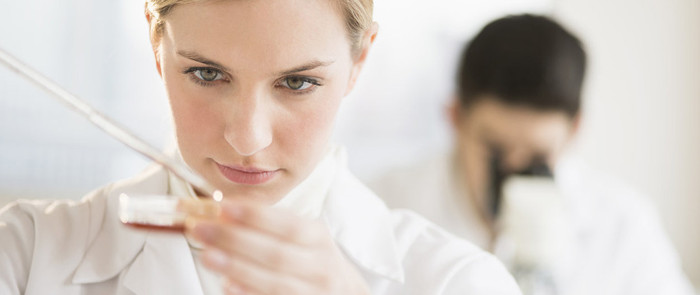Successfully cultivated mini human brains in the laboratory to try medicine
A brain with a mini-ruler has just been successfully cultured in the laboratory from human cells to support a more effective drug testing process than the previous mouse test.
To do this, researchers at the Johns Hopkins Institute "reprogrammed" human skin cells into embryonic cells and then nourished for several months. In this process, they will develop into four types of neurons and two types of supporting cells (astrocytes and glial cells). Finally, the researchers examined the mini brain by placing it in an electrode array, allowing the drug to be tested and observing neurological communication in the form of electrical signals that occur in the brain.

The mini brain has been cultured successfully for drug testing.
Because the brain is very small in size, only 350 micrometers in diameter, the researchers have said it is possible to grow hundreds of such sets on petri dishes, and each sample can be reproduced. from hundreds to thousands of copies to make medicine samples. In fact, some other research groups, such as Brown University, once cultivated a cluster of cells simulating brain activity in the laboratory, but according to Hartung, the lead of the research team said the technique. They can create the highest standard brain copy today.
Hartung said: "We do not create the first brain model, nor is it the best. However, this is the most standard brain model today. And during the drug test, it is imperative. The brain cells used in the right test are as similar to the real brain as possible to ensure the most accurate and comparable results possible. "
It is known that Hartung is establishing a company called ORGANOME in the hope of producing large-scale mini brain models for research purposes . At the same time, he wanted labs around the world to apply this method to create mini brains because he believed that this approach would eventually replace the experiment on animals like the old tradition now. On the other hand, his method has many other applications, such as using skin cells from Alzheimer's, Parkinson's patients, multiple sclerosis or even autism to grow into mini brains, from then on. serving researches to find ways to cure diseases better.
- Successfully cultured human brain in the laboratory
- Successfully developed miniature human brains in the laboratory
- Australia: a breakthrough in human organ development research
- Successfully cultured human liver in the laboratory
- Mini-rat brains in mice raise concerns about intelligent hybridization
- Successfully cultivated human kidneys in the laboratory
- The American scientists raised 'mini brains' to live up to 9 months in vitro
- For the first time successfully replicating human lungs
- Scientists successfully developed lung 'mini'
- Artificial mini brains can produce blood vessels themselves
- Successfully cultivated seaweed varieties that taste like bacon
- Mini heart culture for effective cardiovascular treatment
 Green tea cleans teeth better than mouthwash?
Green tea cleans teeth better than mouthwash? Death kiss: This is why you should not let anyone kiss your baby's lips
Death kiss: This is why you should not let anyone kiss your baby's lips What is salmonellosis?
What is salmonellosis? Caution should be exercised when using aloe vera through eating and drinking
Caution should be exercised when using aloe vera through eating and drinking Does exercising our minds a lot help us burn excess calories?
Does exercising our minds a lot help us burn excess calories?  How did Egyptian mummies remove the brain from the body?
How did Egyptian mummies remove the brain from the body?  Shocking evidence that near-death experiences are real in people who have had cardiac arrest
Shocking evidence that near-death experiences are real in people who have had cardiac arrest  AI has been able to accurately reproduce more than 80% of images in the human brain.
AI has been able to accurately reproduce more than 80% of images in the human brain.  Neuralink tests controlling a robotic arm with thoughts
Neuralink tests controlling a robotic arm with thoughts  Elon Musk's ambition to merge humans with AI
Elon Musk's ambition to merge humans with AI 